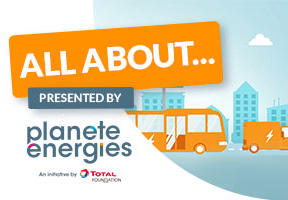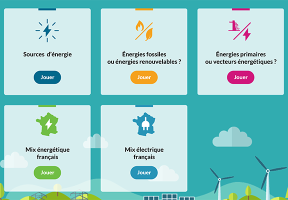
1. Microgeneration in 15 Pictures
Microgeneration refers to the production of through small, easy-to-deploy modular units. They ensure self-sufficiency by matching production with ad hoc demand.

2. The Solar Panel Revolution
Solar power has revolutionized microgeneration thanks to its simplicity: it just takes sun and a few solar panels. This method of producing electricity makes it possible to supply public lighting, mountain shelters, signals and safety systems far from the centralized grid. Here, a parking lot shade structure.

3. Supplying Electricity to Isolated Villages
Stand-alone production of solar power is particularly useful in the rural areas of developing countries. At night, the solar lamp delivers the energy collected during the day. It is a key factor in economic development, education, safety and social stabilization.

4. Self-sufficiency of Islands
The tiny German island of Pellworm in the North Sea has been developing production since the 1980s, enabling it to be self-sufficient and even to export its surplus to the mainland. Its 1,200 residents, mostly crop and livestock farmers, have been involved in most of its wind power, solar and projects.

5. Optimal Use of Space
Floating solar panels are used on calm bodies of water, like those intended for irrigation or industrial use. Japan has invested particularly in this area and has a project with a French company that will generate 2.9 megawatts (MWp).

6. Micro Wind Turbines in Cities
Many small wind turbine models, with a horizontal or vertical axis, have been developed to be placed on public buildings or single-family homes. But they still have low efficiency and often only serve as an auxiliary energy source coupled with other renewable energy sources, particularly solar.

7. The "Iron Lady" of Paris Turns Eco-friendly
In a modest but symbolic gesture, in early 2015 two micro wind turbines were installed on the most famous monument in Paris, the Eiffel Tower. Seven meters high and spanning three meters, they produce 5,000 KWh per year, enough to supply the shop on the Tower's first level.

8. Micro Hydropower
Even a waterway that is slow-moving or descends only a few meters can be harnessed to produce hydropower. Here, in Pakistan's Kashmir region, a low-cost turbine driven by a single waterfall provides power to a remote village. The immediate benefit has been a decline in the use of firewood, which preserves forest land and decreases pollution from homes.

9. A Profusion of Techniques
The use of river currents has been studied around the world in the search for the most efficient designs. This photo shows a river current turbine, Triton 3, floating on the Thames at Chiswick, near London. The turbines are in the raised position.

10. Pico-hydraulic Energy
Systems for capturing the force of water can be downsized to adapt to the smallest streams and constructed using simple techniques. Baylor University in Texas has developed a design that can be used in the most remote villages of developing countries.

11. Small-scale Geothermal Energy Production
Using the of the Earth's sub-surface is another mean of producing energy. At Southampton, this unit produces heat, electricity and chilled water for heating and air-conditioning several of the neighborhood's buildings.

12. Micro Cogeneration in the Home
The concept of heating buildings with a gas- or wood-burning boiler that also produces electricity used on site or resold is being developed for single-family homes and office buildings. Here we see a boiler with its combustion chamber on the right and its heat exchanger on the left.

13. Using Kinetic Energy
Walking on a sidewalk or boogieing on a dance floor can generate electricity. In Toulouse, France, the special pavement shown here captures the energy from the footsteps of pedestrians and uses it for street lighting. Initiatives such as these are still in the experimental stage.

14. Ground Transportation: the Future of Hydrogen
is not stable or strong enough to power a car. But used in a cell can supply the necessary electrical energy. Hydrogen-powered passenger cars are beginning to be sold, hydrogen forklifts have been in service for a long time and we are now seeing bicycles using small hydrogen cartridges. The photo shows the presentation of a hydrogen-powered tricycle in Japan.

15. Futuristic Projects
Researchers are looking into "solar roadways", where is replaced by glass panels containing photovoltaic cells. They could supply power to buildings along the road, improve road markings and safety and even replace overhead power lines. This photo shows a rendering of the Solar Roadways project in Idaho. Graphic design by Sam Cornett.
 This may interest you
This may interest you
See all





















